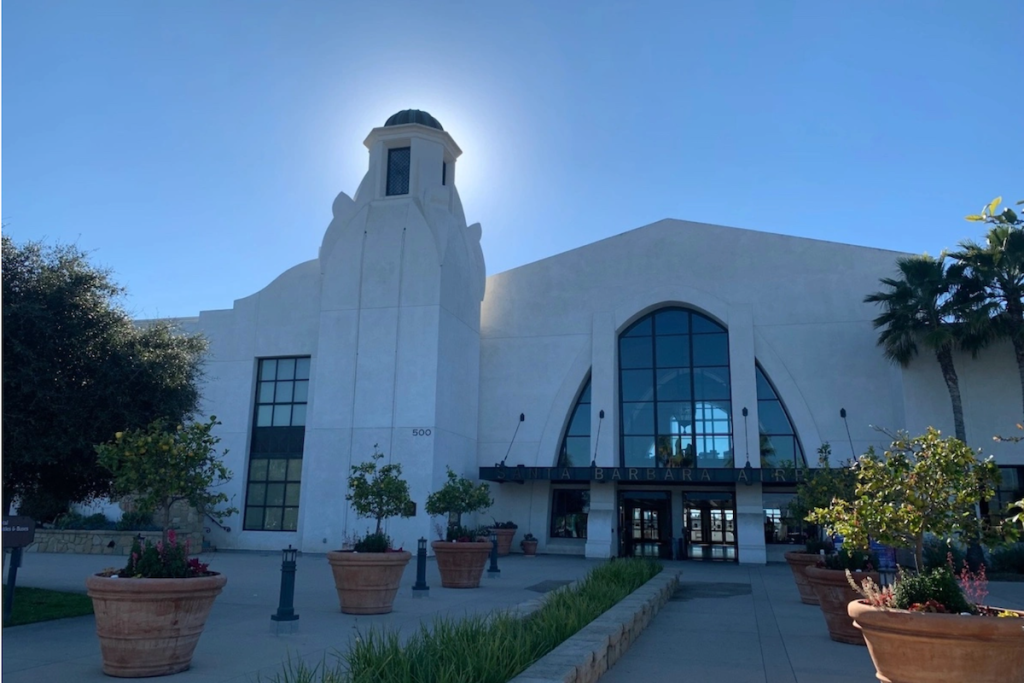Santa Barbara Airport continues to get busier year after year, and it’s got big plans to meet the demand expected over the next 20 years. But a few city councilmembers and residents from neighborhoods affected by the noisy and more frequent flights have been criticizing the Master Plan to expand and asking whether it should keep growing at all.
Airport Director Chris Hastert stopped by city council this week to outline the updates to the 20-year master plan, which was adopted in 2017 and updated every five to ten years to reflect changes in the city and trends in the airline industry.
Hastert said the plan would help the airport adjust to the expected increase in passenger traffic over the next two decades to over 1.8 million passengers per year.
The process to update the plan began last summer, and now the team is ready to recommend several alternative options, including a new administration building, updates to the terminal, taxiway improvements, parking area renovations, and expanded facilities for fueling and electric fixed-wing aircraft charging. One potential project would be a “vertiport” for new “electrical vertical takeoff” aircraft — which were described as “oversized electric drones that carry four to six people.”
In 2021, the airport, not quite fully recovered from the pandemic, had around 340,000 boarding passengers. Last year, that number had already jumped to over 600,000, which Hastert explained translates to more than 1.2 million actual passengers traveling through the airport.
“That’s where I want to stop; I think we already have too many flights,” said Councilmember Kristen Sneddon, who questioned why the city seemed to be accommodating growth that was beneficial for the airport without considering the public outcry over noise impacts and wildlife considerations.
“It’s sounding to me like we’re going to let demand dictate the size rather than pre-determining the size that we want and limiting to that,” Sneddon said. “When do we have the discussion if that’s even what we want? And I’ll be really clear — it’s not what I want.”
She expressed support for many aspects of the plan but said: “It’s just reached a fever pitch that I’m finding it hard to ignore…. I really think addressing this noise issue has to be part of the master plan.”
During public comment, several critical community members asked why noise abatement, air impacts, and the preservation of the airport’s two historic hangars were conspicuously glossed over in the updates.
Hastert said that the airport currently has no plans to tear down or renovate the hangars, and that a separate study is being done regarding that specific issue. He also said that there would be ample opportunity for public comment, including hearings at the Airport Commission, Planning Commission, and a public open house planned later in the week.
When Councilmember Eric Friedman asked what the city could do to curb the growth, Hastert reiterated that the Federal Aviation Administration (FAA) had complete control over national airspace, including when and how often it could be used. The only cities with nighttime curfews or other policies to limit flights had passed those laws before the FAA took control, and no new laws could be created to infringe on that airspace.
Flight demand is also completely dependent on the tourism industry, and airlines would be within their rights to increase flights even if the airport didn’t expand its facilities. If the city didn’t plan for the growth, Hastert said, the airport would be forced to accommodate all the expected traffic with its current facilities, resulting in an “uncomfortable traveling experience” for the million-plus annual passengers.
The council took no action, but the airport updates will be discussed several more times this week, including at a Master Plan Update Public Meeting at 4 p.m. on Thursday, April 20, in the Airport Administration Conference Room.

